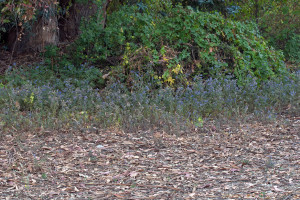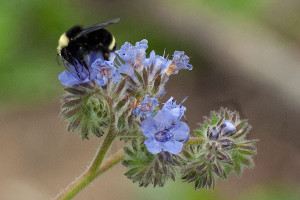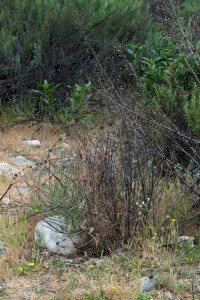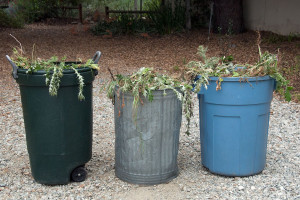Last Saturday volunteers continued our campaign to control invasive annual weeds, starting with a newly discovered patch of Sahara Mustard (Brassica tournefortii) growing behind the old infirmary. Unfortunately, the mustard had already set seed, but the plants we removed had a lot of unopened seed pods, so we were able to keep most of the seeds from reaching the soil.
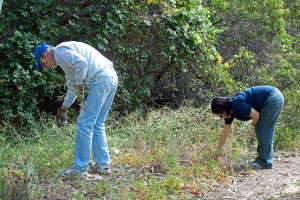
Prof. Dick Haskell (HMC) and Maria Morabe (HMC ’13) pull Sahara Mustard (Brassica tournefortii) behind the old infirmary. ©Nancy Hamlett.
After removing the mustard behind the infirmary…
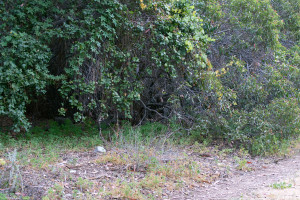
The area behind the old infirmary cleared of Sahara Mustard (Brassica tournefortii). ©Nancy Hamlett.
…we headed up to the top of the ‘Neck’, where we removed a second stand of Sahara Mustard in the area just below the Abilene Way gate
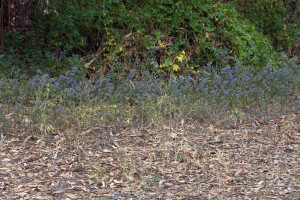
A thick stand of Sahara Mustard (Brassica tournefortii) just below the Abilene gate. ©Nancy Hamlett.
The mustard was growing in front of a nice patch of Phacelia distans, which was being worked by a number of Yellow-faced Bumble Bees (Bombus vosnesenskii), and we paused a moment the admire them…
…before heading down to the lower east side of the ‘Neck’, where several thick patches of Italian Thistles (Carduus pynocephalus) were growing between the fire road and the fence. We started removing these last month, but we hadn’t made it to the northernmost extent of the infestation. The thistles have now started to bolt and flower, which did make them easier to spot. Some were very large…
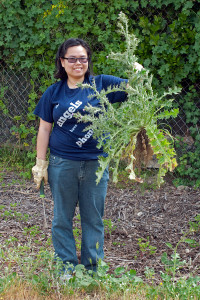
Maria Morabe (HMC ’13) holds a large Italian Thistle (Carduus pynocephalus) she pulled from the east side of the ‘Neck’. ©Nancy Hamlett.
…while others were very small…
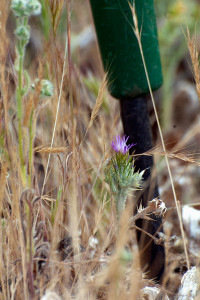
A tiny Italian Thistle (Carduus pycnocephalus) growing among brome and Cryptantha. The bottom end of a weed digger provides scale. ©Nancy Hamlett.
…but in the end, we think we got them all, including some that had hopped over the fire road into the native vegetation:
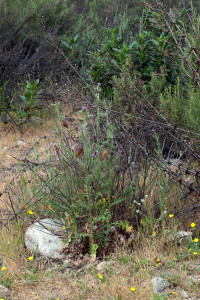
Italian thistles (Carduus pycnocephalus) growing among native vegetation in the ‘Neck’. ©Nancy Hamlett.
At the end of the day, we’d packed three large trash cans full of Sahara Mustard and Italian Thistles.
Annual weed removal will be continuing from now through June, so please join us if you can! You can check out the workday schedule here
